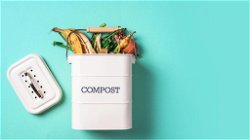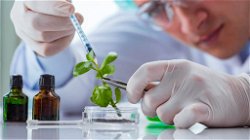Aquaculture: Sustainable Solutions for Food Production
James Bond
. 3 min read
Humans have become aware of the significance of water as a resource due to the fact that seventy percent of the earth's surface is covered by water. Because of this, aquaculture is one of the areas that is heavily exploited regarding the use of water as a resource. The cultivation of fish, shellfish, and aquatic plants through breeding, raising, and harvesting is known as aquaculture. In its most basic form, it can be described as aquaculture. By collaborating with developers, the aquaculture industry can make significant strides towards sustainable practices, balancing environmental responsibility with the production of vital food and commercial products.

Pros of Aquaculture
1. Brave commitments from the Industry's Most Powerful Seafood Buyers
Among the many advantages of aquaculture is the fact that major seafood buyers, such as institutional food service, restaurant chains, and retailers, have made significant commitments to buying and selling sustainably farmed seafood in order to maintain their competitive edge and meet their environmental and social impact goals.
2. Aquaculture is a Sector That Is Growing Rapidly
The aquaculture industry is responsible for approximately 52 percent of the fish that is consumed as food around the world today. However, it is expected that by the year 2030, aquaculture will be the source of more than sixty percent of the fish that is destined for human consumption. The global aquaculture market is projected to reach a value of $50.38 billion in 2026, representing a compound annual growth rate (CAGR) of 7.7%, as stated in the Global Aquaculture Market Report 2022.
3. It has the potential to alleviate the stresses placed on the local biomass populations
In certain parts of the ocean, the management of biomass is becoming more important than it has ever been before. Some habitats have been fished to the point of 90% extinction, and despite more than a decade of management that is less intrusive, they have not recovered. When aquaculture is practiced in a region, it is possible to lessen the impacts on the environment.
3.1 - Aquaculture may result in the introduction of non-native species: Damaging Ecosystems
Some businesses breed fish species in regions where, if they were released into the wild, the fish would be regarded as invasive. The Janitor Fish, also known as the sailfin catfish, is a good illustration of this phenomenon. The Amazon River Basin is its natural habitat, and catfish farms make extensive use of this particular species. This species has a high reproductive rate, a large appetite, and is constantly in competition with other species for food and nesting space.
3.2 - Known to Destroy Fish Species
Though aquaculture can help fish to survive and thrive, it’s also been known to destroy fish species. Farmers need to be intentional about the fish they are breeding and releasing to avoid issues in the future. The environment must be monitored for disease, which can also wipe out the whole population. There are so many considerations for fish farmers to keep in mind in regards to their impact on the environment.
Types of Aquaculture
1. Mariculture
1.1 - Mariculture is a specialized branch of aquaculture involving the cultivation of marine organisms for food.
1.2 - It also helps in deriving other products like fish oil and other important goods in the open ocean.
1.3 - Varieties like prawns, oysters, betake, and mullets are cultured for fishing.
2. Fish Farming: Needless to say that fish farming is the basic type of aquaculture. The process includes the careful breeding of fish. It can be done in any freshwater, preferably seawater. This method of breeding helps in creating a source for food and consumption. Comparatively easier, the process of fish farming only needs proper water conditions and temperatures.
3. Algaculture: Algaculture involves the farming of algae. As we all know, algae are microbial organisms with resemblance to animal and plant characteristics. For economic viability, they are harvested in huge numbers. Algae are used for various purposes. An example of such application is the source of energy for smartphones. Exxon mobile is working towards developing them as a new energy source.
4. Integrated multi-trophic aquaculture: Integrated multi-trophic aquaculture borrows a concept from nature; namely, that in the food chain, one species always finds a feeding niche in the waste generated by another species. Researchers thus tested the theory that nutrients fed to finfish would generate high-quality organic and inorganic waste that shellfish and marine plants depend on to grow.
Conclusion
In conclusion, aquaculture is a rapidly growing sector that provides food and commercial products while also having the potential to alleviate stress on local biomass populations. Major seafood buyers have committed to buying sustainably farmed seafood, and the global aquaculture market is projected to reach a value of $50.38 billion in 2026. Despite its drawbacks, aquaculture has become an important solution to meet the increasing demand for food and commercial products, and it will continue to play a significant role in the future of sustainable agriculture.
More Stories from
Eco-Friendly Practices: How Individuals and Businesses Can Make a Difference
Discover the Power of Eco-Friendly Practices: Learn how individuals and businesses can contribute to a greener world by adopting sustainable measures.
Say No to Plastic Bags: Embracing a Sustainable Future
This article sheds light on the environmental consequences and health implications of plastic bags while providing alternative solutions.
Unveiling India's Volcanic Secrets: A Geological Overview
Explore India's unique volcanic history and the enduring forces of nature that continue to captivate scientists and adventurers alike.
Zero-Waste Living: Practical Tips for Reducing Environmental Impact
Discover the power of zero-waste living as this article offers practical tips and actionable advice for reducing your environmental impact.
Biotechnology and the Future of Medicine: Advancements and Ethical Concerns
This article explores precision medicine's personalized treatments, the promise and ethical challenges of gene editing, the potential of artificial intelligence in healthcare, and the future of organ transplantation.










.png?width=40&aspect_ratio=1:1)


.png?width=40&aspect_ratio=1:1)